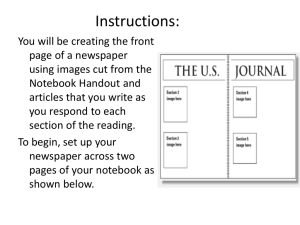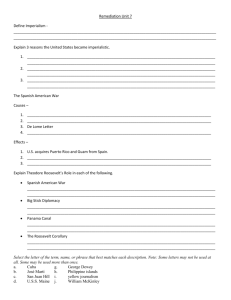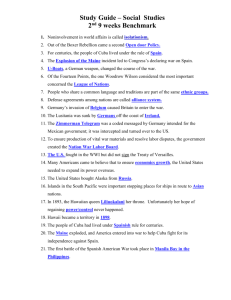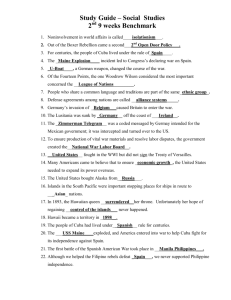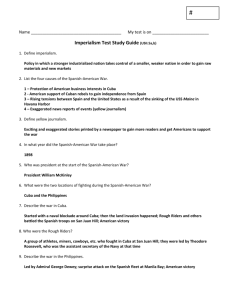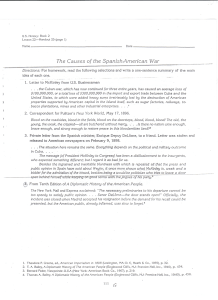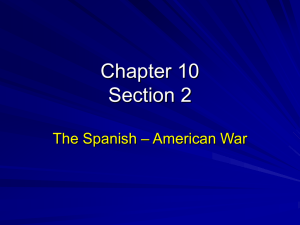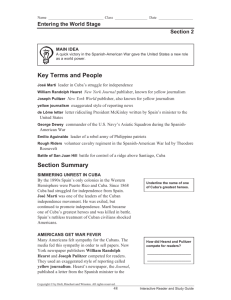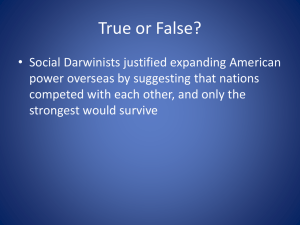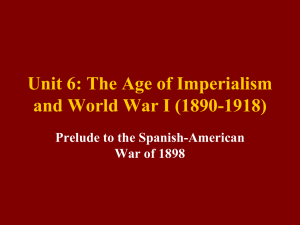When is it appropriate for the United States to send soldiers to fight
advertisement
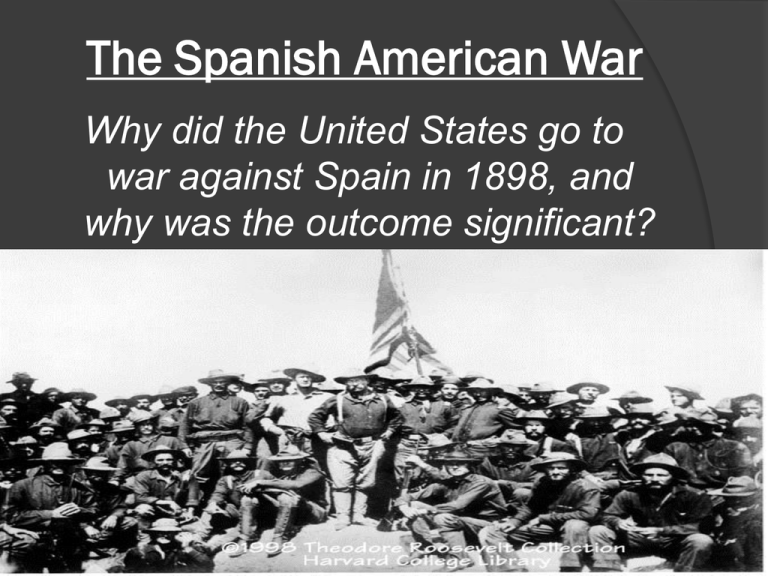
The Spanish American War Why did the United States go to war against Spain in 1898, and why was the outcome significant? The Spanish American War In 1890, Spain’s overseas empire had been reduced to Cuba, the Philippines, Puerto Rico and a few smaller Islands. The Cubans rebelled against Spain and Declared their independence in 1895. Spain sent troops to Cuba to crush rebellion. They used brutal methods to repress the uprising and the U.S. became concerned, because of the reports in newspapers (“yellow journalism”) which deliberately sensationalized the news, making it seem worse than it really was. The Spanish sunk a US ship, the U.S.S. Maine, triggering a firestorm of protests. President McKinley responded to the public by asking Congress for permission to intervene in Cuba. The War ended with U.S. occupation of the Philippines, Cuba, Puerto Rico and Guam. Marked the end of Spain’s colonial empire When is it appropriate for the United States to send soldiers to fight and face death on foreign soil? Choose your top 3 reasons from this list: To assist an ally of the United States To protect territory that is close to U.S. Borders To stop human rights abuses To acquire resources To gain power To acquire territory To improve national security To spread or protect American values and moral beliefs To fight against tyrannical governments Under no circumstances is it ever appropriate Other (explain) TURN and TALK Share your top 3 reasons with your partner and see if you can agree on 3 reason together. In 1898, the United States sent troops to Cuba and the Philippines to fight a war against Spain. Many Americans wondered whether the United States had a right to extend its power into colonial lands. Others saw it as an opportunity for the United States to advance as a world leader. In this lesson, you will learn how the war, and the debate that followed, marked a significant change in American beliefs about the nation’s foreign policy. HEARST v. PULITZER Yellow Journalism Journalism that exploits, distorts, or exaggerates the news to create sensations and attract readers. With your Partner: You will examine primary source images about important events prior to and during the Spanish-American War. You will then use these images to create a mock newspaper summarizing the events. Instructions: You will be creating the front page of a newspaper using images cut from the Notebook Handout and articles that you write as you respond to each section of the reading. To begin, set up your newspaper across two pages of your notebook as shown below. Who is being blamed in this song? What is he being blamed for? Why might an editor have wanted to start this war? What did the editor do to provoke this war? Read Section 20.2 Trouble Brewing in Cuba Next to the image for this section : Write a letter to the editor expressing your feelings about the coverage in the New York World and New York Journal of events in Cuba Letter should include Thoughts on the accuracy of these stories Ideas on coverage of these events as an effort to keep Americans informed What do you see here? What seems to have happened? According to the headline, what is the cause of the explosion? How do you think Americans felt when they saw this image? Read Section 20.3 Americans call for War with Spain • • • Next to this image: Write a lead story sensationalizing the publication of the de Lome letter and the explosion of the USS Maine in order to fuel public anger toward Spain Include in your story – The basic details of each incident – Attempts to encourage Americans to press the U.S. government into war with Spain – The terms de Lome letter and USS Maine What do you see in this image? Which countries appear to be fighting each other? Where do you think this battle is being fought? Why do you think these two countries are fighting Who appears to be winning this battle? Read Section 20.4 Splendid Little War Next to this image: Write a report from the battlefront as if you were a war correspondent Report must include Details of the various battles taking place in Cuba Reports of casualties The terms Rough Riders and San Juan Hill What do you see? Why might Uncle Sam need larger suit he is being fitted for? Based on what they are carrying, what do you think the men entering the room want? What is McKinley’s response to these anti-imperialists? Does the cartoonist seem to be in favor of U.S. expansion? How can you tell? Read Section 20.5 A New Power on the World Stage Write a caption for the cartoon in which you describe the events that prompted the cartoonist to draw it Caption much include An explanation of each character in the cartoon and who each represents The terms Platt Amendment and AntiImperialist League Processing - Class discussion Which of the reasons listed on the preview slide do you think best apply to the Spanish-American War? Why? Do you think the United States was justified in sending troops to Cuba and the Philippines to fight against Spain? Why or Why not? Did the U.S. actions in the Spanish-American War promote or hinder the advancement of the ideals of opportunity and democracy? In what ways? How did the Spanish-America War reflect the new role of the United States as a world power?
